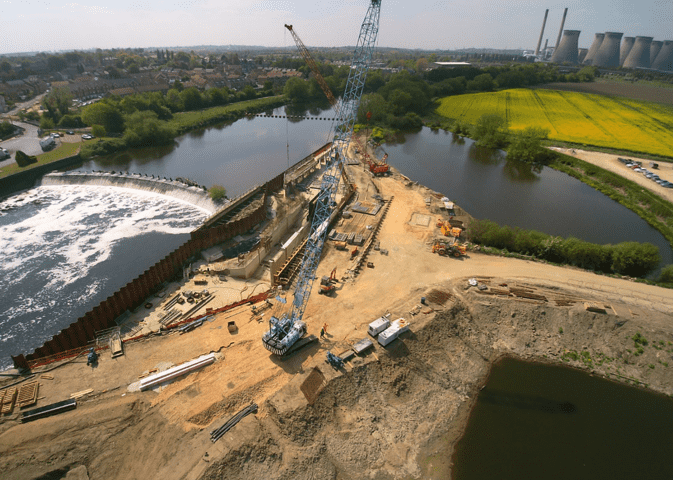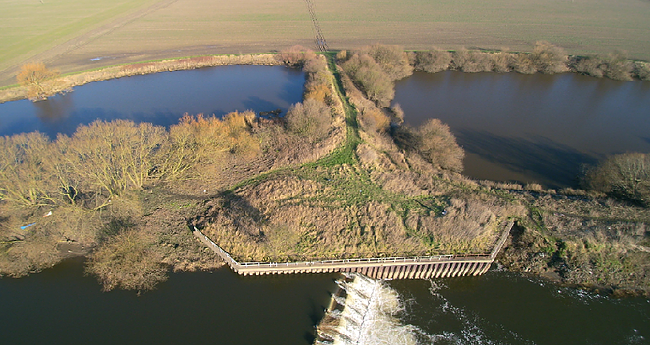JOB: KNOTTINGLEY HYDROPOWER STATION, FORGE HILL LANE, KNOTTINGLEY, WEST YORKSHIRE
STRUCTURAL ENGINEERS : JNP GROUP
DATE: SEPTMBER 2016
COST: ~£11,000
PROPOSED DEVELOPMENT:
The £7.5m Knottingley Hydro-Electric Power Station, the largest river hydro project to be commissioned in England since 2000.
It was proposed to construct tanks and a concrete vertical walled channel to take water to and from a new hydroelectric power plant, which was to be constructed on the north bank of the River Aire and adjacent to Brotherton Weir.
Water was to be taken from the river upstream and to the west of the Brotherton Weir and after passing through the power plant will be discharged to the river downstream and to the east of Brotherton Weir.
A 150mm diameter pipe, to carry electricity cables, was to be installed beneath the River Aire upstream and to the west of Brotherton Weir, at about 8 metres depth. In addition, it was proposed to form pipe jacking pits to the south and north of the river in order that the pipe could be jacked beneath the river.
SITE INVESTIGATION:
The purpose of the investigation was to obtain an indication of the ground conditions, at the positions of the exploratory holes, to assess the likely pattern of strata present in the area of the proposed hydroelectric power plant and proposed tunnel, to establish the load bearing characteristics of the strata for foundations and to establish the capacity of the ground to stand open during excavations. In addition, Waste Acceptance Criteria (WAC) analysis, Total Dissolved Solids analysis and groundwater monitoring was required.
The site investigation was undertaken in two stages due to flooding in one area and included:
- 5 No. Cable Percussive Boreholes
- Geotechnical Laboratory Testing
- Total Dissolved Solids analysis.
- WAC Testing
- Installation of standpipes for Groundwater Monitoring
- Interpretative Report (Foundation Design, Retaining Structures and Earthworks)
REPORTING:
The comprehensive site investigation enabled us to determine that a piled foundation would be the most suitable for the hydroelectric power plant, due to finding deep made ground, a high water table and very low strength cohesive drift deposits at shallow depths. Trench sheet and U Piles can be bought here.
Earth Pressure Coefficients were provided for the water channel, where tanks and concrete vertical walled channels were to be constructed. For the tunnelling and pipe jacking pits earth pressure coefficients were provided. However at a depth of 8m, the ground conditions varied with very dense granular made ground on the northern side (high resistance to penetration) and very soft very low strength natural clays on the southern side (little resistance to penetration). It was recommended that consideration needed to be given to temporary and permanent retention of the jacking pit excavations.
As it was proposed to re-use the waste material on site with a series of cut and fill earthworks procedures, a number of compaction tests were carried out. The optimum moisture content for the materials to be compacted at were determined, along with their maximum dry density.
OUTCOME:
Overall, the site investigation was a great success and on 3rd November 2017, Yorkshire’s largest hydro-electric power station was opened, generating renewable electricity for the local electricity grid and a local flour mill.



